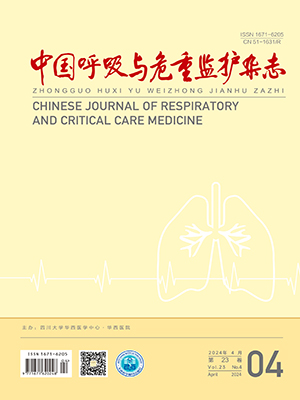Objective To analyze the clinical characteristics and epidemiological characteristics of patients with coronavirus disease 2019 treated early in Jiangxi province.Methods Four-night patients with coronavirus disease 2019 treated in this hospital from January 21st to 27th, 2020 were included in this study. The epidemiological and clinical data of patients after admission were collected, and laboratory tests such as blood routine, urine routine, stool routine, liver and kidney function, electrolytes, myocardial enzymes, erythrocyte sedimentation (ESR), C-reactive protein (CRP), calcitonin, coagulation, T cell subset and Chest CT were reviewed. The clinical results of common and severe/critically ill patients were compared.Results Of the 49 patients, 40 were common and 9 were severe/critical. Fourty-six patients had a clear history of contact with Wuhan or other areas of Hubei. The sex ratio was 2.06∶1, and the average age was 42.9 years. The symptoms were mainly fever (78.7%), cough (38.8%), and fatigue (18.4%). 28.6% (14 cases) of patients had hypertension and diabetes. Serum lymphocyte count and calcium concentration of the patients were decreased, but lactate dehydrogenase, ESR, CRP and serum amyloid A were increased in these patients. T lymphocyte subsets (CD3+, CD4+, CD8+) decreased significantly in these patients. Forty-seven patients (95.9%) had single or scattered patchy ground glass density shadows on the chest CT. Compared with common patients, the patients with severe/critical patients were older (P=0.023), hospitalized later (P=0.002), and had higher comorbidities (P=0.017). ESR (P=0.001), CRP (P=0.010) and the serum amyloid A (P=0.040) increased significantly, while CD3+ (P<0.001), CD4+ (P=0.012), CD8+ (P=0.006) decreased significantly in severe/critical patients.Conclusions The patients with coronavirus disease 2019 in Jiangxi province are commonly imported from Wuhan. Severe/critical patients are older, hospitalized later, and have more medical complications and more severe systemic inflammatory reactions than common patients.
Citation:
XIANG Tianxin, LIU Jiaming, XU Fei, CHENG Na, LIU Yang, QIAN Kejian, ZHANG Wei. Analysis of clinical characteristics of 49 patients with coronavirus disease 2019 in Jiangxi. Chinese Journal of Respiratory and Critical Care Medicine, 2020, 19(2): 154-160. doi: 10.7507/1671-6205.202002070
Copy




